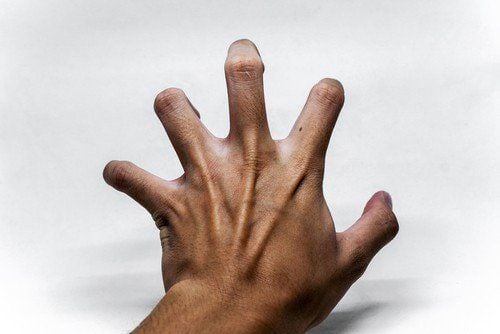This is an automatically translated article.
Epilepsy is a chronic non-communicable disease of the brain that affects approximately 50 million people worldwide. Seizures occur with recurrent seizures. This condition causes short episodes of involuntary movements that are sometimes accompanied by loss of consciousness and control of bowel or bladder function. This article will provide more detailed information about this disease.
1. What is Epilepsy? Epilepsy will be related to the brain's electrical system. Elevated electrical impulses can cause brief changes in a person's movement, behavior, sensation, or perception. These events, called seizures, last from a few seconds to several minutes. The seizures are all the result of an excessive discharge of electricity in a group of brain cells. The extent of seizures can vary from the briefest inattention to severe and prolonged seizures. Seizures can also occur with varying frequencies ranging from less than 1 per year to several per day.
People who have had two or more seizures without an obvious trigger at least 24 hours apart have seizures.
Treatment of epilepsy with medication or surgery helps control seizures for most people. Some people need lifelong treatment to control a possible seizure, but for others it may be possible after the seizure eventually goes away. Epilepsy in children can develop the condition with age.
2. Symptoms of Epilepsy Epilepsy can cause seizures - sudden, uncontrolled movements. However, convulsions can cause a wide range of other symptoms, such as those that can range from staring to falling... Most doctors divide these symptoms into several categories. varies, depending on how the seizures affect your brain.
The symptoms of focal seizures can be easily confused with other neurological disorders, such as narcolepsy, migraine, or psychosis... Careful examination and testing should be performed to distinguish epilepsy from other disorders.
Generalized seizures: Convulsions occurring in all regions of the brain can cause generalized seizures No strokes.: Convulsions in the absence of strokes, or convulsions petit mal usually occurs in children. People with non-stroke seizures are characterized by gazing into space with or without subtle body movements such as blinking or pursed lips, and this lasts only 5-10 seconds. . Non-stroke seizures can occur in clusters, occur as often as 100 times per day, and cause short-term loss of consciousness. Ataxia convulsions: This condition most commonly affects the legs. Atonic seizures often cause you to suddenly collapse or fall. Clonic seizures: Clonic seizures are associated with repetitive jerky muscle movements and affect locations such as the neck, face, and arms. Myoclonic seizures: These seizures usually appear as sudden jerks or convulsions of short duration, reaching the upper parts of the body, including the arms and legs. Conic-clonic seizures: Hypertonicity seizures, or grandeur, are the most dramatic types of seizures. Conic-clonic seizures can cause a sudden loss of consciousness, rigidity, and tremors. Sometimes, conic-clonic seizures cause a loss of bladder control or a bite on your tongue.

Bệnh động kinh có thể gây co giật - cử động đột ngột, không kiểm soát được
3. Causes of Epilepsy All causes of disruption of the brain's natural circuitry can cause epilepsy disorders:
Genetic influence: Certain types of epilepsy, classified according to the type of seizure you have experienced or the part of the brain affected, which can run in families. In these cases, epilepsy is likely to have a genetic predisposition. High-impact head trauma: Head trauma from a car accident or other severe trauma can cause epilepsy. Abnormal brain activity: Brain tumors or vascular malformations, such as arteriovenous malformations (AVMs) and cavernous malformations, can cause epilepsy. Stroke is considered the leading cause of epilepsy in adults over the age of 35. Infections: Meningitis, HIV infection, viral encephalitis, and some parasitic infections can cause epilepsy. Stroke Lack of oxygen
4. Do children have epilepsy? Children can develop epilepsy, and in some cases, rapid growth over a period of several years. When children are taken regularly, the symptoms of the disease will stop. However, when a child has epilepsy, if medication alone does not control the disease, other treatments may be helpful.
5. Diagnosis of epilepsy 5.1. EEG The doctor will review the patient's description of the seizures and medical history, and will order an electroencephalogram (EEG) to confirm the diagnosis and get more information about the symptoms. convulsion. Perform a painless EEG that records your brain's electrical activity as wavy lines. Patterns change during seizures and can show which part of the brain is affected.
5.2 Brain scans Detailed images of the brain from tests like CT or MRI can help doctors rule out some non-epileptic causes such as changes in brain structure, bleeding, or mass . If a CT scan uses a powerful X-ray, an MRI scan uses a magnet and radio waves to create images that help your doctor make an accurate diagnosis
6. Complications of epilepsy Best way to avoid complications caused by epilepsy, you can find a treatment that helps and stick with it. Most people with brain disorders have long lives, and they are rarely injured during a seizure. However, there are still some types of seizures that can make patients more likely to die early, but this is very rare.

Thuốc chống động kinh được xem như phương pháp điều trị động kinh phổ biến nhất
7. Treatment of epilepsy 7.1. Antiepileptic drugs are considered the most common treatment for epilepsy. If one medicine doesn't work, your doctor may adjust the dose or prescribe another medicine for you. About two-thirds of people with brain disorders will get rid of their seizure symptoms by taking medication as prescribed.
7.2. Ketogenic Diet If medication doesn't work, your doctor may recommend a ketogenic eating plan. This diet is quite strict and your healthcare provider will monitor you closely while you follow it. A diet high in fat and protein, and low in carbs - can help your body burn fat instead of sugar. This change produces changes in the brain that reduce the risk of seizures. More than half of the children following this diet had at least 50% of them have seizures. Some even stopped having them.
7.3. Vagus Nerve Stimulation (VNS): Stimulation of the vagus nerve sends electrical impulses through a large nerve in your neck. Cortical stimulation: The surgeon will place electrodes on the surface of your brain. Deep brain stimulation: Electrodes placed deep in the brain can cut seizures by 50% or more for some people. 7.4. Surgery In many cases, antiepileptic drugs can prevent focal seizures when medications are not effective. If your doctor finds that your brain always starts in a single area of the brain, removing that area can stop them or make them easier to manage. Surgery also treats conditions that cause seizures, such as brain tumors.
8. Seizure First Aid If you see someone having a seizure, take the following steps:
Remove hard or sharp objects from the area where the patient is. Loosening anything in the neck can affect the baby's breathing. Turn the patient to lie on their side. Put something soft underneath their head. Don't put anything in their mouth. Call 911 if the seizure lasts longer than 5 minutes, recurs, or the person has trouble breathing or waking up, is pregnant, injured, has diabetes, has heart disease, or has never had a seizure before. Also call 911 if the seizure occurs underwater. 9. Some problems related to epilepsy 9.1. Precautions in the treatment of epilepsy Persistent or recurrent seizures may be considered a sign of epilepsy. These seizures cause serious problems and require urgent treatment. To help quickly stop the seizure, the doctor will prescribe intravenous medication combined with oxygen breathing.
9.2. Epilepsy and pregnancy It is necessary to ensure the safety of most women with brain disorders during pregnancy. More than 90% of babies born to mothers with epilepsy are healthy. But if you're planning to have a baby, talk to your doctor before making this decision. Some anticonvulsants can cause health problems in babies.
9.3. Living with epilepsy When suffering from epilepsy, patients can enjoy a normal life if they strictly follow the doctor's instructions about taking medicines on schedule, with a reasonable diet.
Please dial HOTLINE for more information or register for an appointment HERE. Download MyVinmec app to make appointments faster and to manage your bookings easily.
Reference source: webdm













